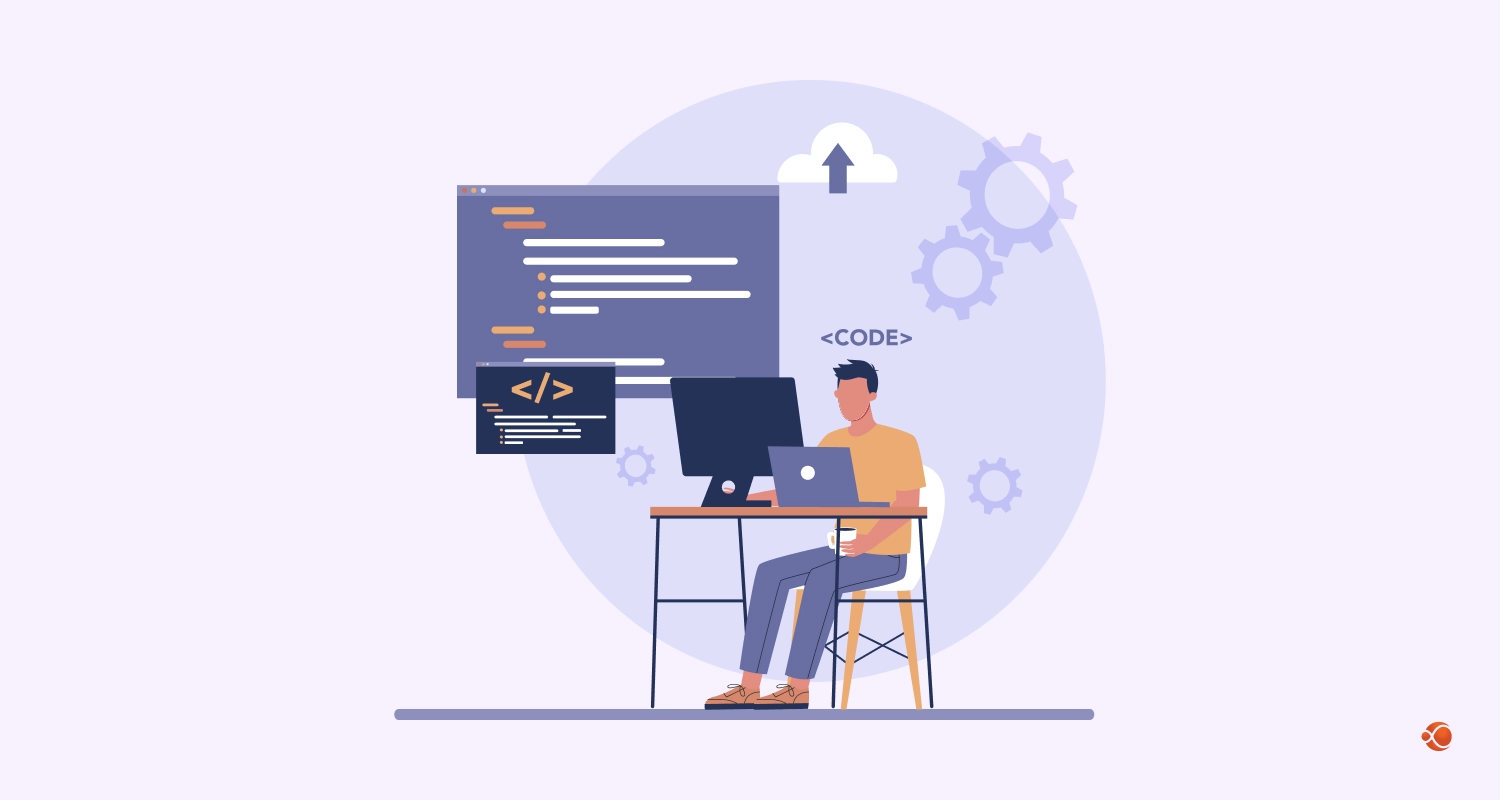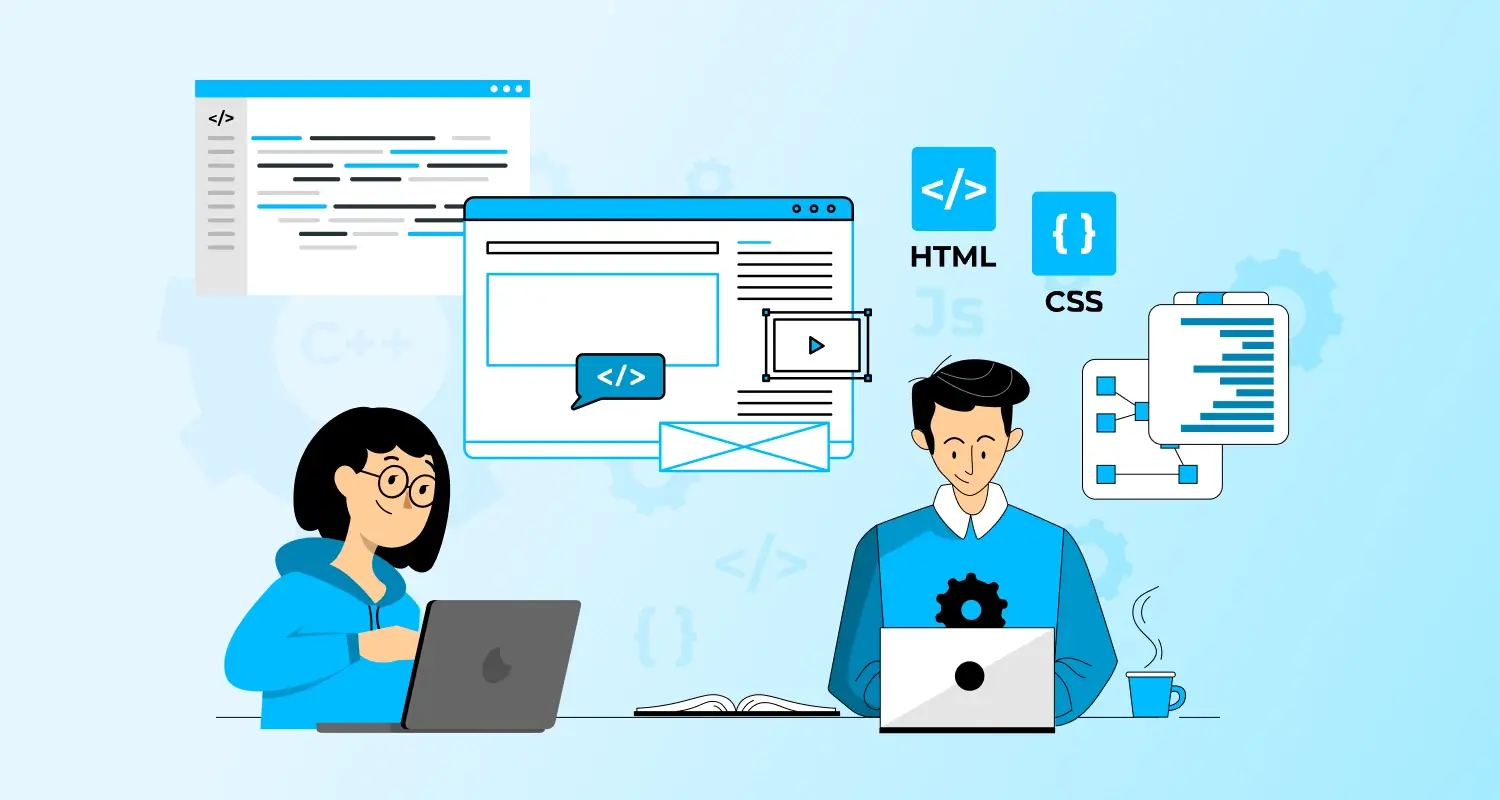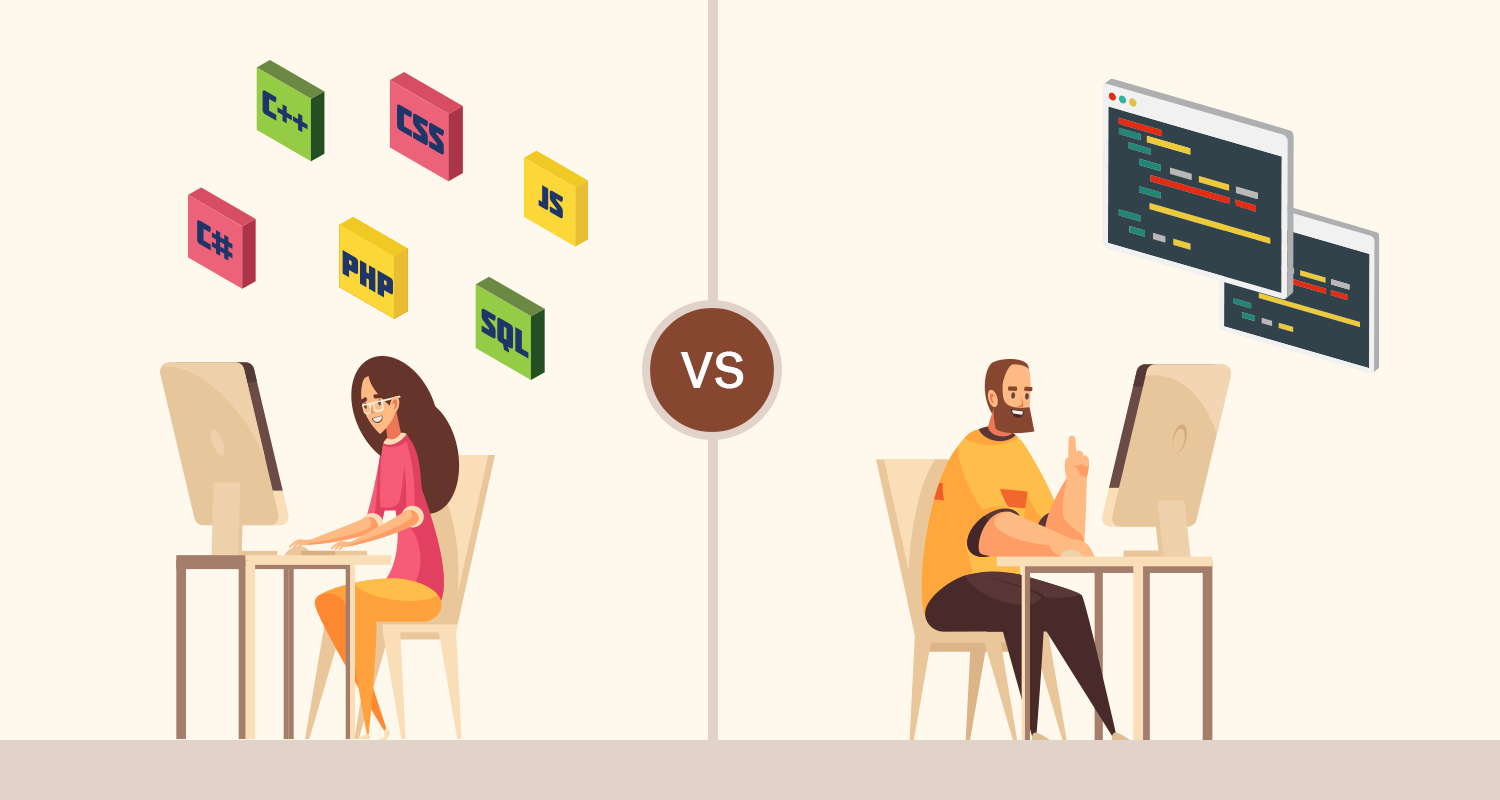The list of high-paying IT occupations almost usually includes the position of a web developer. Why not, then? Web developers for any IT company are crucial in today’s digital age. A web developer is responsible for creating any beautiful website, effective e-commerce site, or other online-based application.
If you want to work as a web developer, you’ll be happy to learn that full-stack developer skills are highly sought after. Do you know how front-end, back-end, and full-stack web development compare to one another? What distinguishes these employment roles, in other words? We’ll simplify things for you.
Let’s talk about what is Back-end, Front-end, and Full-stack developers and what are the differences between them.
Who are Front-end Developers?
Front-end development is a critical aspect of web development, and businesses around the world are increasingly recognizing the importance of hiring front-end developers to create a compelling user experience. If you’re looking to hire front-end developers in India, you’ll find a large pool of talented and experienced developers who can deliver high-quality front end development services at an affordable cost.
Front-end developers possess a deep understanding of the latest design trends and user experience best practices, and are proficient in the programming languages and tools required for front-end development. Whether you need to create a new website from scratch or enhance an existing application, you can rely on front-end developers to deliver exceptional results.
When you hire front-end developers in India, you can access a wide range of front-end development services, including website design, mobile application development, user interface design, and more. Indian front-end developers can also work closely with your in-house team to provide ongoing support and maintenance for your website or application.
Skills Required for Front-End Development
Front-end developers must possess an eye for design, strong coding skills, and a deep understanding of user experience. They should be well-versed in programming languages such as HTML, CSS, and JavaScript, as well as frameworks like React and Angular. They must also be comfortable with version control software, testing and debugging tools, and responsive design techniques.
Tools Required for Front-End Development
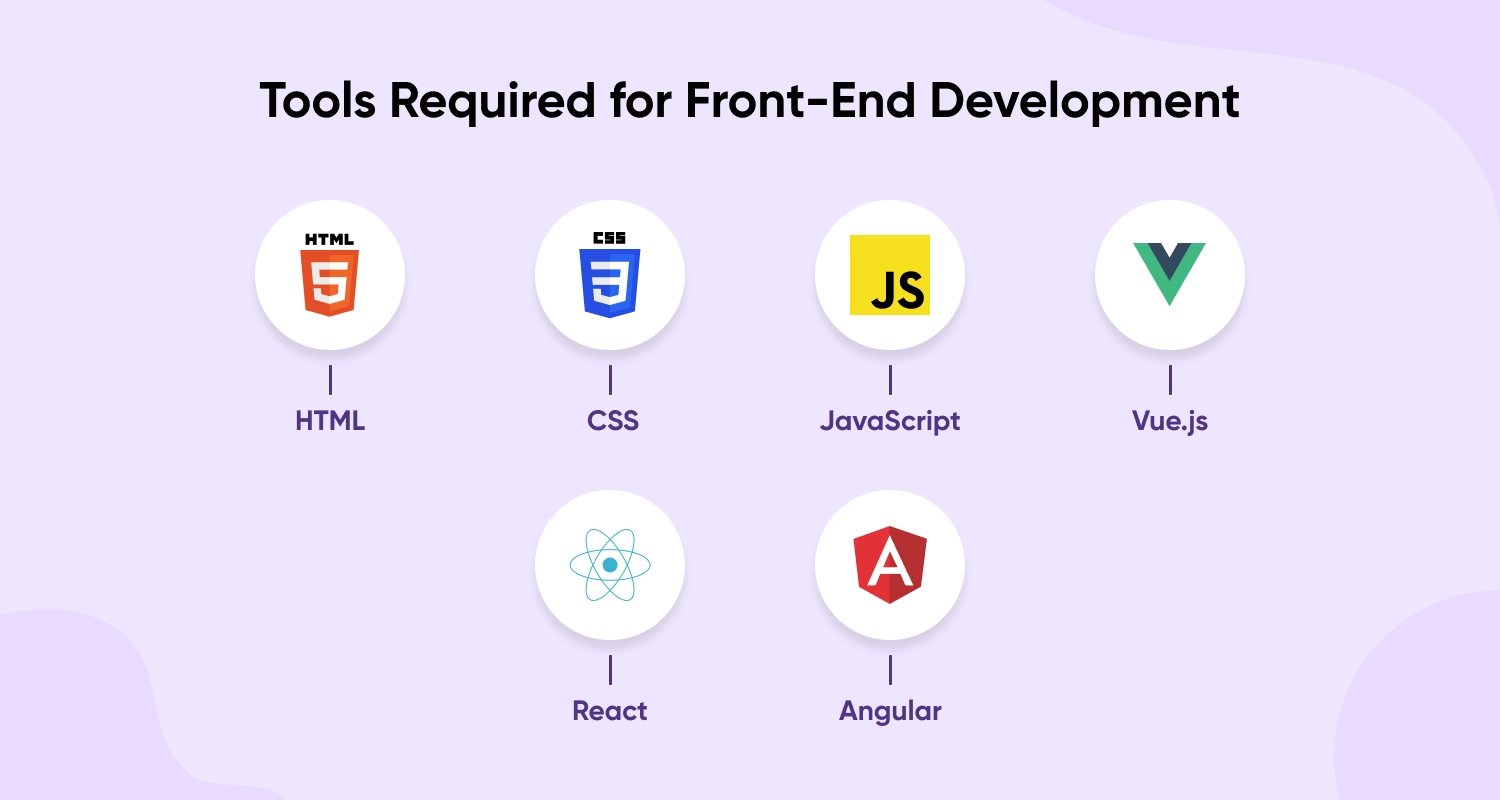
- HTML
Hypertext Markup Language (HTML) is the foundation of all websites and applications. Front-end developers use HTML to create the structure of a website or application, including headings, paragraphs, links, and images. - CSS
Cascading Style Sheets (CSS) is used to define the look and feel of a website or application. Front-end developers use CSS to style HTML elements, such as fonts, colors, margins, and padding. - JavaScript
JavaScript is a programming language that allows front-end developers to add interactivity and dynamic functionality to websites and applications. Front-end developers use JavaScript to create animations, handle user input, and manipulate the DOM (Document Object Model). - React
If you are looking to build user interfaces, React is the best choice among the Javascript library. It allows front-end developers to create reusable UI components, manage application state, and optimize performance. - Angular
One of the most popular frontend framework is Angular that is used when the web applications are complex to develop. It provides a set of tools and features for building scalable and modular applications. - Vue.js
Vue.js is another popular front-end framework used for building user interfaces. It provides a simple and intuitive API for creating reactive and performant applications.
In conclusion, front-end development is a crucial aspect of web development, and front-end developers must possess a wide range of skills and expertise to create engaging and responsive user interfaces.
Who are Backend Developers?
Back-end development services are an essential part of any web development project, as they involve the creation of the server-side functionality that enables a website or application to run smoothly. Back-end developers must possess a wide range of skills and experience to ensure that the back-end of a web application is well-constructed, efficient, and secure.
One of the significant differences between back-end and front-end development is that front-end development deals with the visual and interactive elements of a website or application, whereas back-end development deals with the underlying structure, data storage, and logic. However, both back-end and front-end development work together to create a seamless and engaging user experience.
If you’re looking to develop a web application, it’s essential to choose a reliable back-end development services provider that can help you build a robust and efficient back-end that meets your specific requirements. This includes selecting a team of experienced back-end developers who can work with you to create a solution that fits your needs and budget.
Skills Required for Back-End Development
Back-end developers require strong skills in programming languages such as PHP, Python, Java, and Ruby. They should have a deep understanding of databases, such as MySQL and PostgreSQL, and proficiency in using database management tools like SQL Server and Oracle. Additionally, they must be well-versed in software version control, deployment tools, and server management.
Tools Required for Back-End Development
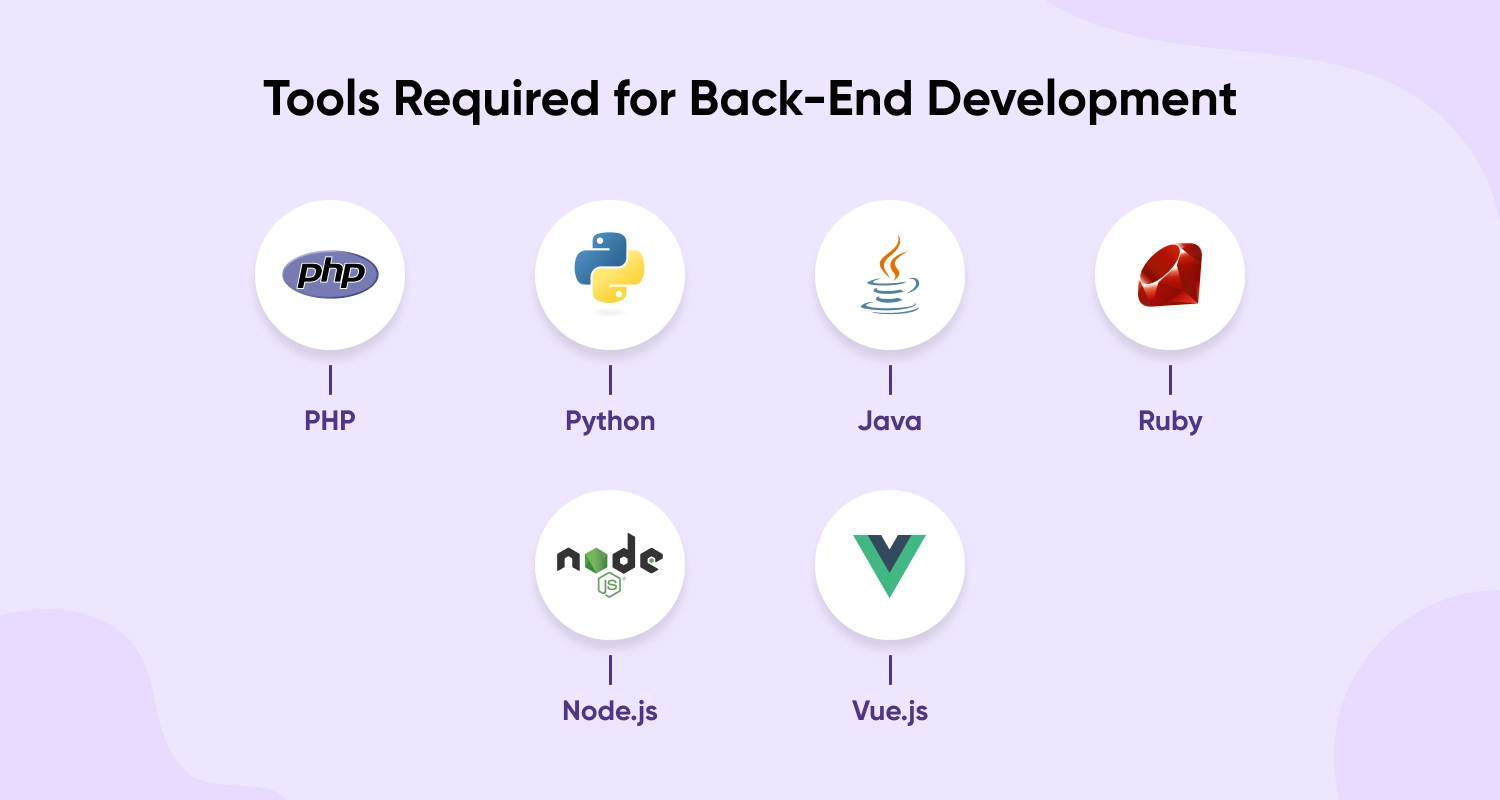
- PHP
One of the most commonly used server-side language is PHP for web development. Back-end developers use PHP to handle database operations, generate dynamic content, and create APIs. - Python
Python is the only versatile language used for both frontend and backend web development. Back-end developers use Python for building complex web applications, data analysis, and machine learning. - Java
One of the widely used programming languages if you are looking for scalability and reliability. Back-end developers use Java for developing enterprise-level web applications, creating RESTful APIs, and managing database operations. - Ruby
Ruby is a dynamic programming language that is used primarily for web development. Back-end developers use Ruby for creating APIs, building web applications, and managing database operations. - Node.js
Node.js is an open-source, cross-platform JavaScript runtime environment that allows back-end developers to run JavaScript code on the server-side. Back-end developers use Node.js for creating scalable and high-performance web applications.
Who are Full stack Developers?
If you are looking to hire full-stack developers in India, there are many talented professionals with experience in both front-end and back-end development. A full-stack developer can work on all aspects of web development, from designing the user interface to managing the server-side operations. They can help you create efficient and scalable web applications that deliver a seamless user experience.
Full-stack development involves both front-end and back-end development, which are two separate but interconnected aspects of web development. Front-end development is focused on creating the user interface, while back-end development is focused on managing the server-side operations. Full-stack developers have expertise in both front-end and back-end development, making them a valuable asset to any web development team.
Skills Required for Full-Stack Development
Full-stack developers require a diverse range of skills that include front-end development, back-end development, database management, and software version control. They must be proficient in HTML, CSS, and JavaScript for front-end development and have expertise in programming languages such as PHP, Python, Java, and Ruby for back-end development. Additionally, they should have experience in using database management systems like MySQL, PostgreSQL, and MongoDB. They must also have experience in using software version control systems like Git, and deployment tools like Jenkins.
Tools Required for Full-Stack Development
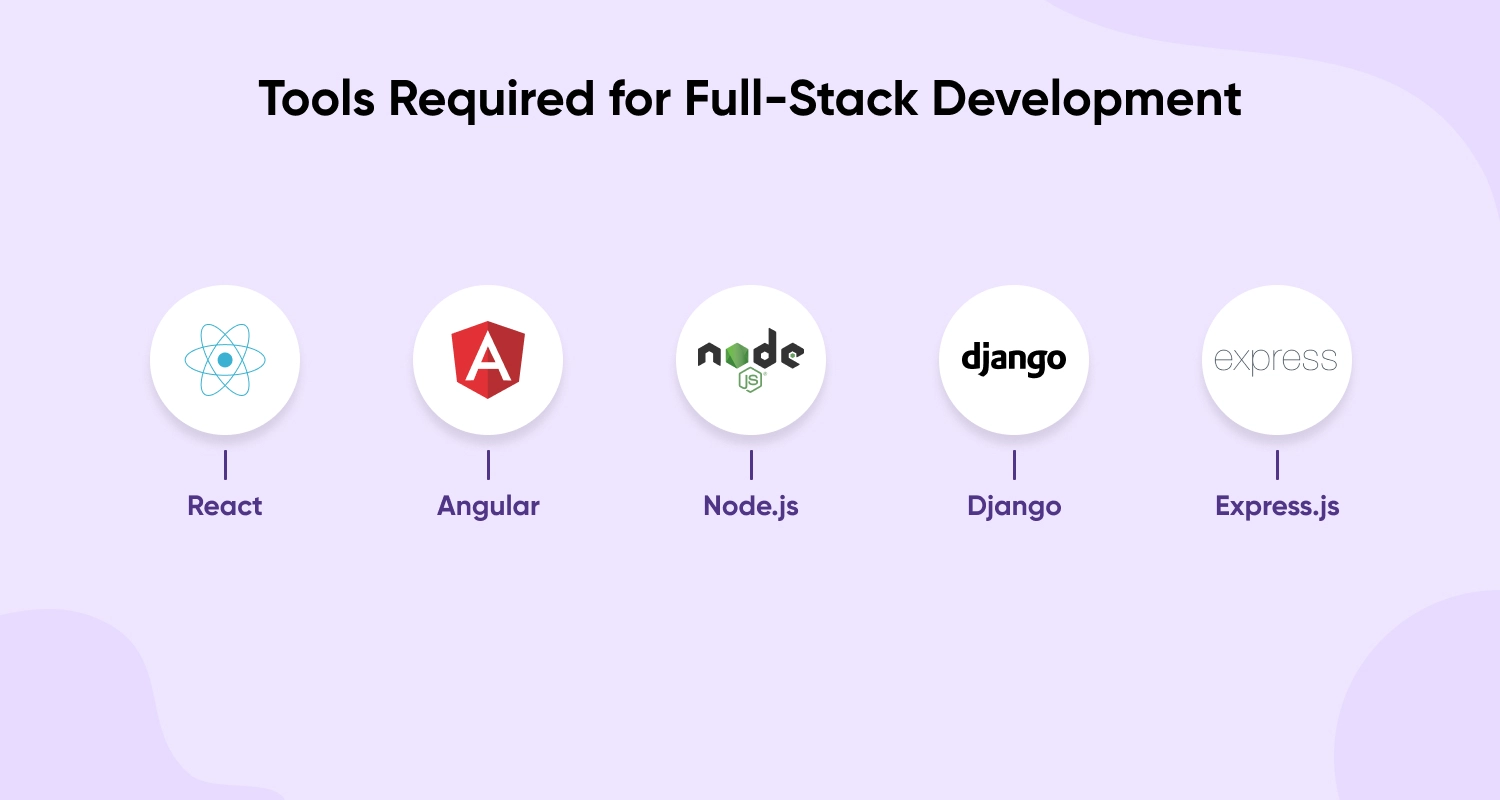
- React
Full-stack developers use React to create dynamic web applications and interactive UI components. - Angular
Angular is a front-end web application framework that is used for building complex web applications. Full-stack developers use Angular to create single-page applications, dynamic forms, and interactive UI components. - Node.js
Node.js is an open-source, cross-platform JavaScript runtime environment that allows full-stack developers to run JavaScript code on the server-side. Full-stack developers use Node.js for creating scalable and high-performance web applications. - Django
A high-level Python web framework is Django. It is used for quick development for web app development. Full-stack developers use Django to build scalable and secure web applications and RESTful APIs. - Express.js
Express.js is a fast, minimalistic, and flexible Node.js web application framework that is used for building web applications and APIs. Full-stack developers use Express.js to create RESTful APIs, web applications, and real-time applications.
Difference Between Front-end vs Back-end vs Fullstack
| Parameters | Front-End Developer | Back-End Developer | Full stack Developer |
| Primary Reading Method | Client-side | Server-side | Both |
| Languages and Frameworks | HTML, CSS, JavaScript, Angular, React | Java, C#, Python, Ruby, Node.js, Django | All of Front and Backend |
| Operational Function | Page load time, graphic rendering | Server response time, database throughput | Both front-end and back-end aspects, plus software lifecycle |
| Roles and Responsibilities | UI/UX design, front-end development | Server-side development, database integration | Both front-end and back-end development and integration |
| Dependencies | Dependent on back-end functions | Independent of front-end or full-stack | Both front-end and back-end functions |
| Focuses on | Managing visual side and functionality | Managing database | Managing full software development lifecycle |
The main difference between Front-End, Back-End, and Full-Stack Developers is the area of focus and expertise. Front-End Developers focus on the visual and interactive aspects of web applications, Back-End Developers focus on the server side of web applications, and Full-Stack Developers possess knowledge of both front-end and back-end development. Each type of developer has a specific set of responsibilities and requirements to ensure that web applications run smoothly and provide an exceptional user experience.

Conclusion
In conclusion, the choice between front-end, back-end, and full-stack development entirely depends on the specific requirements of the project. Both front-end and back-end developers are essential for building web applications. Front-end developers are responsible for designing user interfaces and ensuring an excellent user experience. On the other hand, back-end developers work on server-side programming, database management, and integration of the business logic with the front end.
Full-stack developers, on the other hand, are the ultimate solution to handle end-to-end web application development. They have a comprehensive understanding of both front-end and back-end development and can create a seamless integration of the two. Full-stack developers are versatile professionals, equipped with a diverse range of skills and knowledge required to manage the entire software development life cycle.
Whether to hire a dedicated developer will depend on the project’s specific needs, scope, and budget. However, having a full-stack developer on board can offer several advantages, including streamlined communication between the teams, optimized development, and faster time to market.
So, while each type of developer has its strengths and limitations, choosing between front-end, back-end, or full-stack development should be based on the requirements of the project, its scale, and its goals.
Frequently Asked Questions
Which is better, a full stack developer or a backend developer?
The answer to this question depends on the requirements of the project. If the project requires expertise in both front-end and back-end development, then a full-stack developer would be a better choice. However, if the project is more focused on the back-end development, then a backend developer would be a better fit.
It is important to note that full-stack developers may have a wider skill set, but this does not necessarily mean they are better than backend developers. Each role requires different skill sets and expertise, and the choice ultimately depends on the specific needs of the project.
Is Full Stack Developer a Better Choice for Building My MVP?
An MVP is one of the processes of web development where a minimum viable product is built with basic features to understand the early customer’s requirements and get feedback to move ahead with further development. When building an MVP, the focus is on speed, agility, and creating a product with minimal features that can be launched quickly.
In this case, a full-stack developer might be a better choice for building an MVP as they have a broad understanding of the entire development process, from front-end to back-end. They can work quickly and efficiently, ensuring that the MVP is developed and launched promptly.





